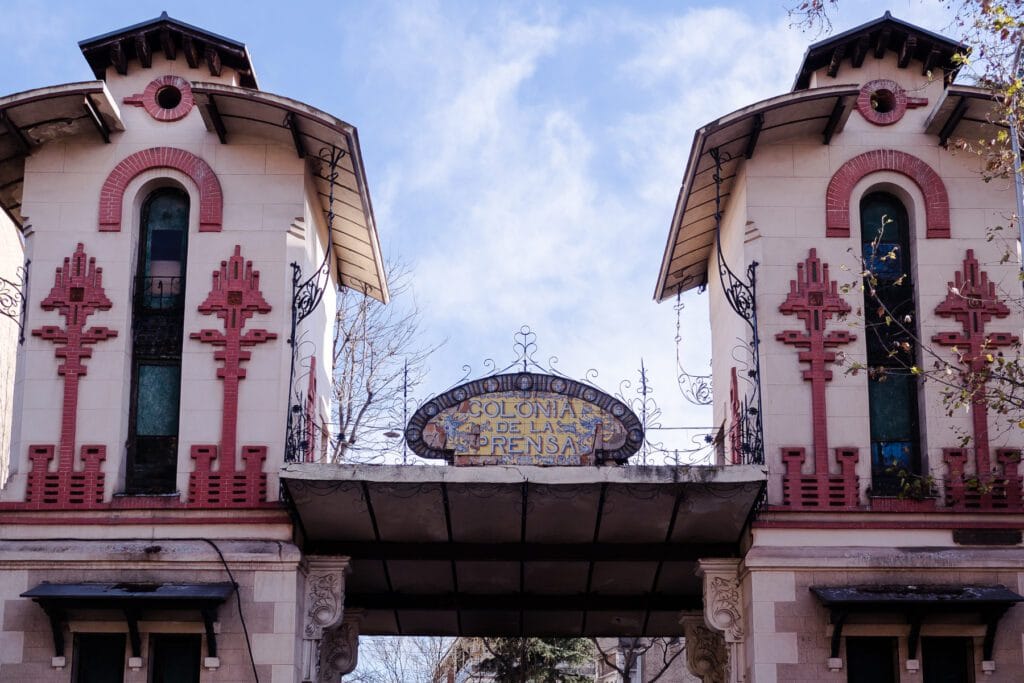The story of Madrid’s colonias
When Madrid’s city walls were demolished in 1868, a construction boom got underway, with smart apartment blocks springing up all over the place. Areas like Salamanca took on a distinctly Parisian feel as the wealthy moved into grand flats furnished with every modern convenience. But little provision was made for the city’s poor, who had no option but to live in cramped conditions in the basements and attics of such buildings. This caused epidemics, with outbreaks of tuberculosis posing a particular problem. While some philanthropists tried to help out, it wasn’t until the state stepped to create Madrid’s colonias in that conditions really started to improve.
Ley de Casas Baratas
In 1911 the first Ley de Casas Baratas (law for cheap housing) was approved with a second one being introduced in 1921. The idea was to build cheap and affordable housing based on the garden cities constructed in the late 19th century in northern Europe. While the state did not pay for construction itself, landowners were given an incentive to do so. If you built a housing estate, or colonia, the government pledged to connect it to the city’s electrical and sewage system. They’d also hook an area up with a tramline so that workers could easily get into the city.

The idea caught on and when the second Ley de Casas Baratas was approved in 1921, things kicked up a gear and construction went into full swing. Though colonias are now all over the city, the majority are located in Chamartín. At a high elevation with views of the Sierra de Guadarrama mountains and yet, at that time, completely underdeveloped, it was the perfect choice.
Many estates were made to house people in particular professions. Colonia Albéniz, for instance, was built in 1934 for musicians and today is still nicknamed the Colonia de los Músicos. Then there’s the Colonia los Carteros for postmen, Colonia Manzanares for rail workers and Colonia los Pinares for journalists. If you’re interested in the details, Madripedia has a list of all the colonias along with construction dates and a little potted history (in Spanish).
Modernist masterpiece
Some of the colonias are also interesting from an architectural standpoint. Arguably the most splendid of the bunch is the Colonia de la Prensa in Carabanchel. A formerly gated community that still has its original Art Deco entranceway intact, this one is well worth a visit. A more upmarket affair built in 1913 in the modernist style, each house is utterly unique, presumably designed to suit the taste of its owners, who were mostly newspaper editors.

Despite having huge gardens and roof terraces, the mansions of Colonia de la Prensa are not the most sought after in Madrid. While €700,000 will buy you a palace in Carabanchel, you’d have to fork out five million euro for a smaller abode in Chamartín’s Colonia El Viso. This is probably down to Madrid’s heat island effect, which means that property in the cooler north is considerably more expensive than in the boiling south.

Running along part of Calle Serano, El Viso is also noted for its rather more sober architecture. Built in the Spanish rationalist style, its plain white facades are completely free or ornament. Personally, I prefer the flashy extravagance of Colonia de la Prensa!
Civil War
Sadly, during the siege of Madrid a lot of damage was done to both Colonia de la Prensa and to Colonia Moscardó in Usera. This was because both are situated in the south along what was once the front line. Some of the houses in Colonia de la Prensa were irreparably damaged and I’ve heard that a bullet hole is still lodged in a wall of Colonia Moscardó.

Formerly known as Salud y Ahorro (health and savings) Colonia Moscardó lost its name during Franco’s dictatorship. It was renamed after José Moscardó e Ituarte, the general infamous for holding out during the siege of Toledo’s Alcazar even after his son was taken hostage. The name was slated to be changed back under the Ley de Memoria Histórica, however, this looks unlikely to happen under the present local government.

It wasn’t only names that were changed after the civil war, the population of the colonias also saw a radical shift. Because a lot of the working class had supported the Republican side, many residents were killed or went into exile and as Madrid got bigger, the formerly modest accommodations looked increasingly luxurious. Now the colonias in Chamartín are very well heeled. Take Chamartín’s Colonia Albéniz, for instance, where modest looking dwellings with generous patios go for a cool two million euros. In this documentary there’s a chilling moment where a resident of El Viso is asked about the people who live there. In hushed and rather reverent tones, she reveals that Francis Franco (grandson of Francisco Franco) is one of her neighbours.
Out of space
While their residents have changed greatly, the facades of Madrid’s colonias have not. Now protected by law, owners are unable to make large changes to the structure or external appearance to the properties. In order to better preserve their character, Madrid’s government has earmarked 1.7 million euros mainly to widen pavements and create parking spaces in 17 of these colonias. It’s interesting to note though that, while most colonias in Chamartín stand to benefit, none of this money will be going to Colonia Moscardó in Usera.

I’m particularly peeved about this decision as I live in the area. When we were badly hit by Covid back in autumn, a report on Cadena Ser indicated that one of the reasons for the virus’ rapid spread in the area could have been down to narrow inadequate pavements. Just like with tuberculosis, cramped conditions are worsening a public health issue and, yet again, authorities are slow to act.
Keen to find out more about the history of Madrid? See another side of the city with one of my unique walking tours.




